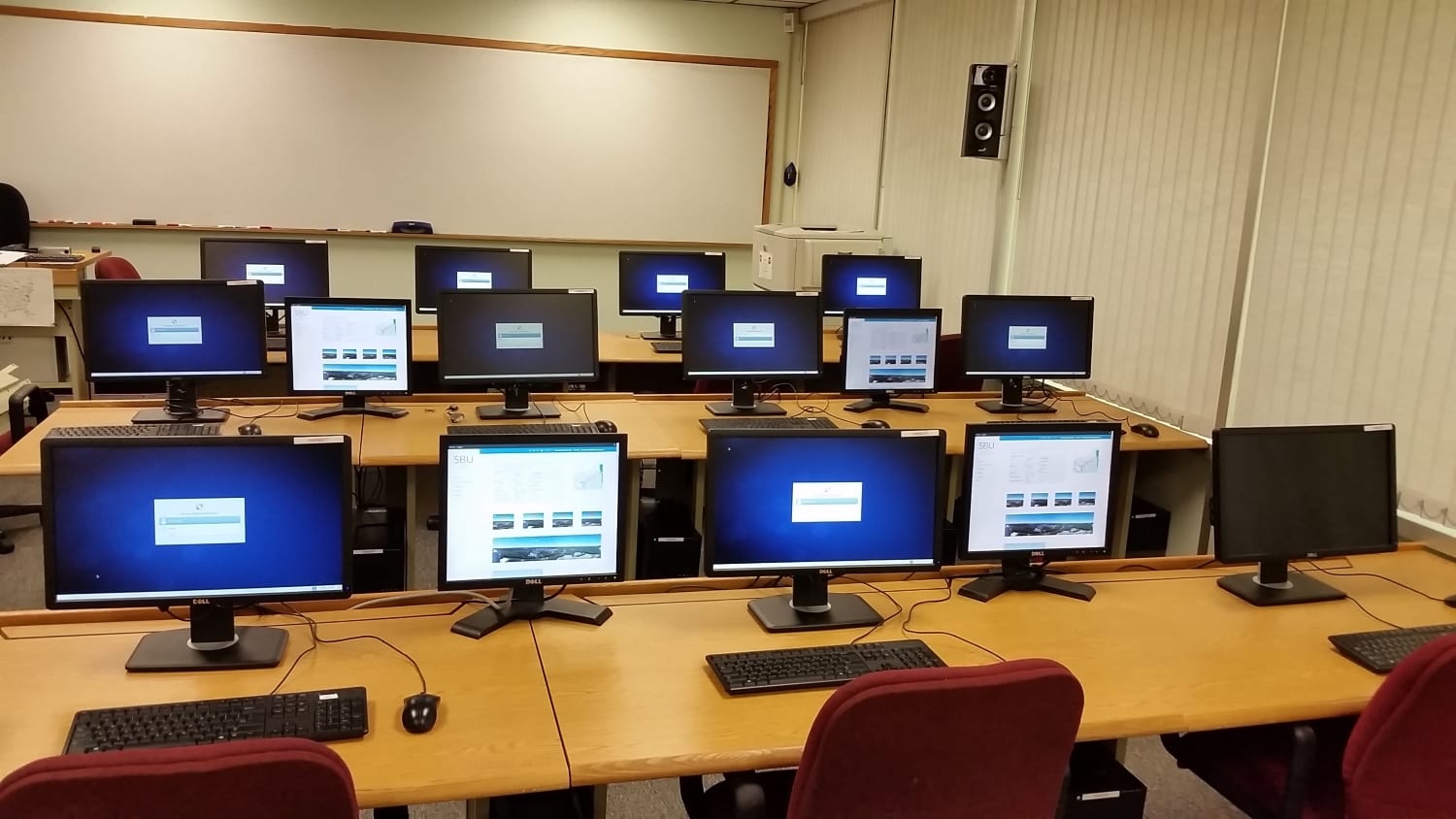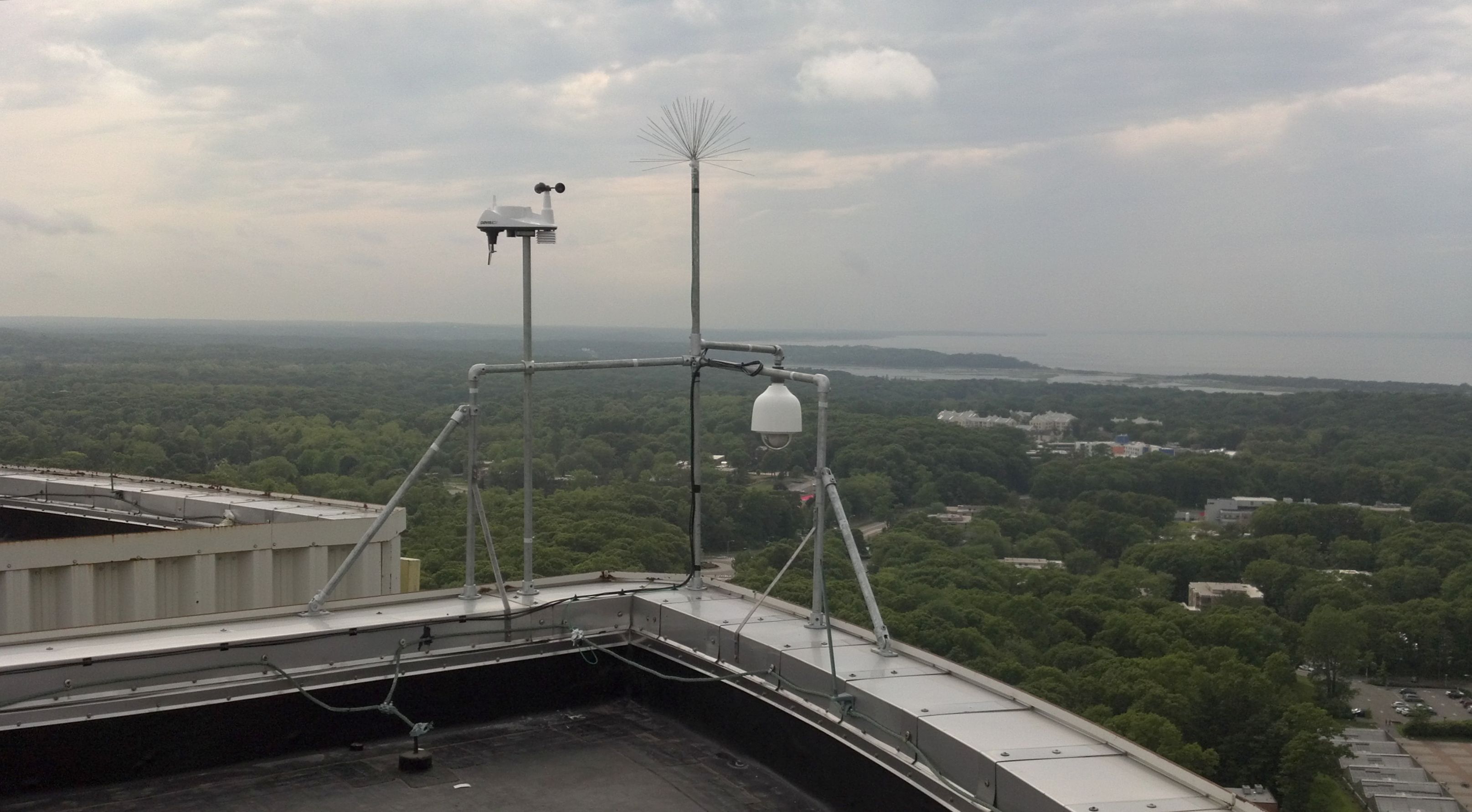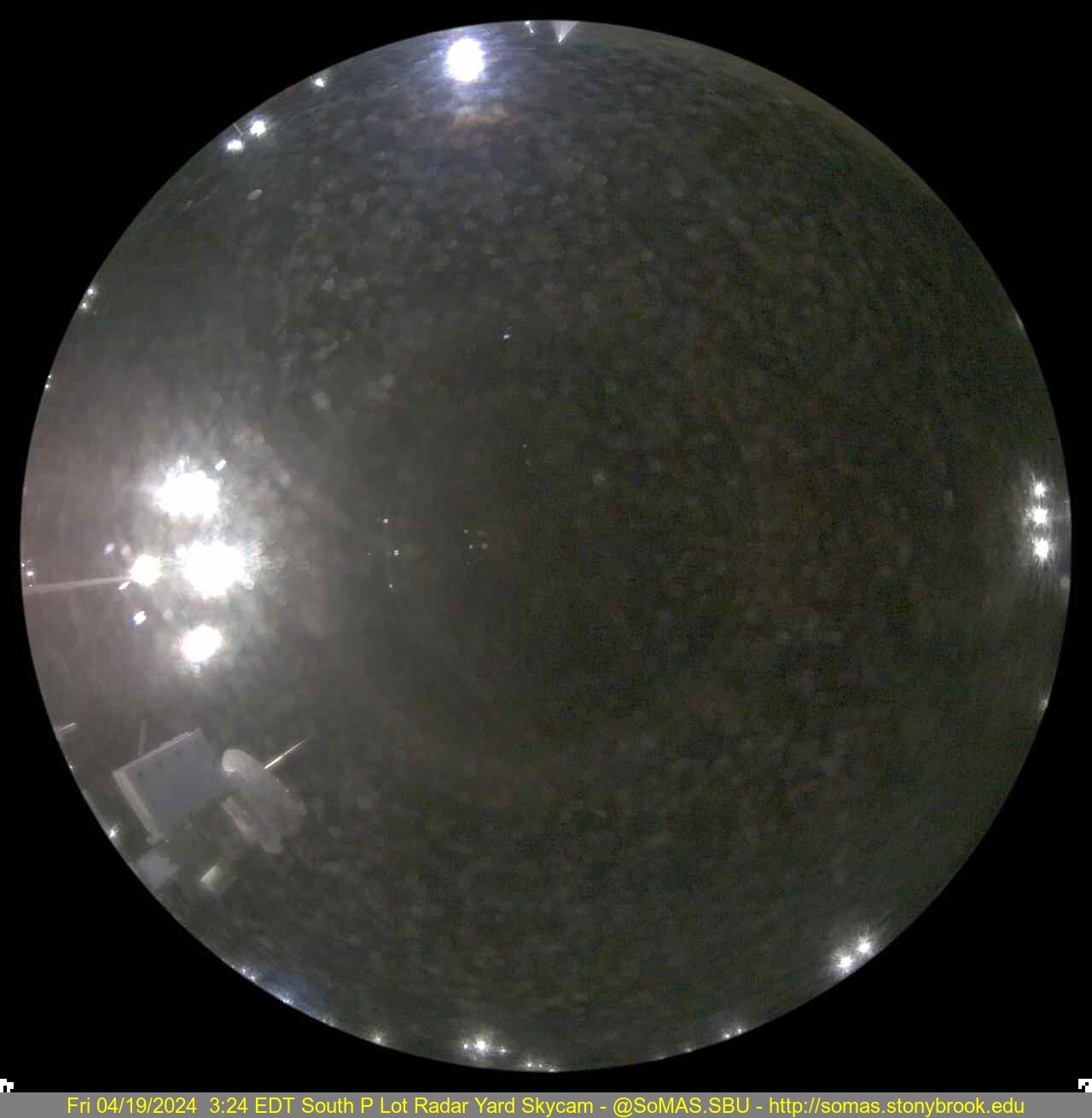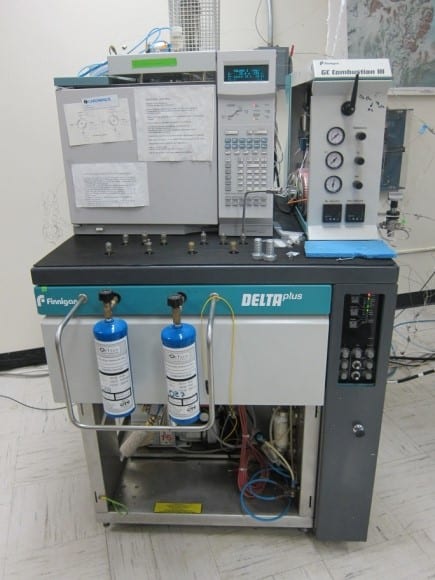FACILITIES
There are excellent facilities for students to participate in weather analysis and forecasting as well as research. In addition, two atmospheric chemistry laboratories equipped with state-of-the art instrumentation to characterize atmospheric trace gases and aerosol particles are available offering training on some of the latest analytical tools and laboratory based research opportunities. Furthermore, a small research airplane (not operated by the Atmospheric Sciences Division) is available for conducting field research.
Weather Forecasting and Analysis
The Atmospheric Sciences Division maintains a comprehensive system (developed by UNIDATA) for ingesting and displaying real-time data in the form of worldwide surface and upper air observations, numerical weather prediction model output, satellite imagery, Doppler radars, and lightning data. Software used to access this data include IDV (Integrated Data Viewer) and GEMPAK (interactive system for displaying all meteorological data), as well as many other in-house weather commands. The real-time weather data is available in the meteorology teaching laboratory available for course-related exercises, research, and the student operated weather forecast page. There are workstations running CentOS to ingest and display weather data, as well as run weather prediction model (Weather Research and Forecasting model). The Atmospheric Sciences Division classrooms have the ability to project high-resolution graphical information on multiple displays that continuously loop various weather products in the lab.
There are excellent facilities for students to participate in weather analysis and forecasting as well as research. The Atmospheric Sciences Division maintains a comprehensive system (developed by UNIDATA) for ingesting and displaying real-time data in the form of worldwide surface and upper air observations, numerical weather prediction model output, facsimile maps, satellite imagery, US and local Doppler radars, and lightning data. Software used to access this data include McIdas (process satellite information), GEMPAK (interactive system for displaying all meteorological data), WXP (meteorological calculations and display), as well as many other in-house weather commands. Real-time data is also available from the Stony Brook weather station. The Institute also maintains vertically pointing radar.
Extensive computer resources are available for student use. The Atmospheric Sciences Division maintains a large network of PC/Linux workstations for both general use and research projects. There is an undergraduate meteorology teaching laboratory available for course-related exercises and research. We also maintains several cluster computers, with several hundred processors and 50-100 Tb of storage.


Supercomputing Facilities
Faculty and students can also make use of Stony Brook University’s high performance computing clusters, Seawulf and LIRED.
Meteorological Observations

Real-time data is also available from the two Stony Brook weather stations and a Southampton station, which all continuously transmit every minute back to SoMAS temperature, winds, relative humidity, pressure, and precipitation. One Stony Brook weather station is located on top of the hospital (166 m above the surface), while the other is 8 m above ground. On top of the hospital there is a real-time panoramic camera that has 360 degree views of incoming weather. ITPA also maintains numerous hand held instrumentation to use in the field.
In addition, the Division of Atmospheric Sciences maintains a vertically pointing Microwave Rain Radar (MRR) radar, weighing precipitation gauge, and a Parsivel snow/rain imager at the Radar Observatory. The MRR vertical radar is used to obtain continuous measurements of the precipitation structures to 7 km above the surface (below) in order to investigate how these structures change with different ambient conditions within the atmosphere.

A snow/rain particle imager (Parsivel) uses laser optics to identify rain and snow particles as they fall between the two lasers. This allows determination of snow versus rain (hydrometeors), an estimate of their size, fall speed, and number concentration. This information is used to validate weather prediction and climate models that predict the concentration and fallspeed of rain and snow.

SBU - BNL Radar Observatory (SBRO)

The SBU - BNL Radar Observatory (SBRO) is a world-class, surface-based remote sensing facility developed jointly by the radar science group at Stony Brook University (SBU) and the Center of Multiscale Applied Sensing (CMAS) at Brookhaven National Laboratory (BNL).
The SBRO offers an ideal research and development environment to SBU faculty and students and BNL scientists and engineers. The radar science group focuses on the development and application of innovative measurement capabilities to address a wide range of fundamental scientific challenges including cloud and precipitation microphysics, convective dynamics, and lifecycle studies. Our group is interested in the practical use of observational networks, adaptive sensing, space-borne, and phased-array radars in weather and climate research, from extreme weather to wind and solar forecast. We have expertise in the use of comprehensive forward instrument simulators for experimental and instrument design and model verification. Our group collaborates with the Center for Multiscale Applied Sensing (CMAS) at Brookhaven National Laboratory for the study of atmospheric transport and turbulence, and the study of complex, heterogeneous systems such as urban and coastal areas.
Mobile Atmospheric Research Trailer (SMART)
The Mobile Atmospheric Research Trailer (SMART) is a twenty foot trailer that is operated to support scientific research at SoMAS. The SMART (Stony Brook Mobile Atmospheric Research Trailer) is designed to provide nominal ‘green’ power off the grid, with three 300 W solar panels charging a 2.4 kw Li+ battery. Inside the trailer there are workspaces and wall monitors to display real-time data collected in the field.
Atmospheric Chemistry Laboratories
Trace Gas Analysis Laboratory
The reconstruction of past atmospheric processes by measuring trace gas isotopes in ice cores is one of the focus points of this laboratory. The assessment of biochemical production of volatile organic compounds (VOCs) is achieved by compound specific isotopic analysis. Eddy covariance measurements of reactive oxygenated VOC’s within forest canopies are applied to further constrain the evolution of VOCs in a natural environment. Marine biogenic emissions of trace gases are quantified in the laboratory.
This laboratory is equipped with the following instrumentation available for research: Finnegan 253 isotope ratio mass spectrometer with gas chromatograph interface; Finnegan Delta Plus isotope ratio mass spectrometer with gas chromatograph interface; Pfeiffer quadrupole residual gas analyzer with membrane gas exchange inlet; standalone HP 6890 gas chromatograph with flame ionization detector; thermal conductivity detector, and Hg reduction gas detector.


Aerosol Research Laboratory
The focus of this laboratory is the investigation of the role of aerosol particles in cloud formation, the interaction of aerosol particles with trace gases, the generation of marine biogenic particles, and determination of biogenic precursor gases for the formation of secondary organic aerosol particles. This laboratory is equipped with several optical microscope systems (Olympus BX series) with digital imaging processing coupled to custom-built ice nucleation cells for observation of aerosol phase transitions (ice crystal formation) for temperatures as low as 180 K; a custom-built chemical ionization mass spectrometer (Extrel) coupled to various types of flow reactors to investigate heterogeneous kinetics involving atmospheric oxidants and radicals and corresponding products; a Langmuir-Blodgett film balance (NIMAS) to determine surface pressure and phase of surfactants, a high-resolution proton-transfer time-of-flight mass spectrometer (Ionicon Analytik GmbH, PTR-ToF 8000) for detection of volatile organic compounds, a scanning mobility particle sizer (TSI Inc.) for determination of aerosol size distributions form 10 nano to 1 micrometer, and a 800 L sea tank for growth of marine species and generation of biogenic aerosol particles.
